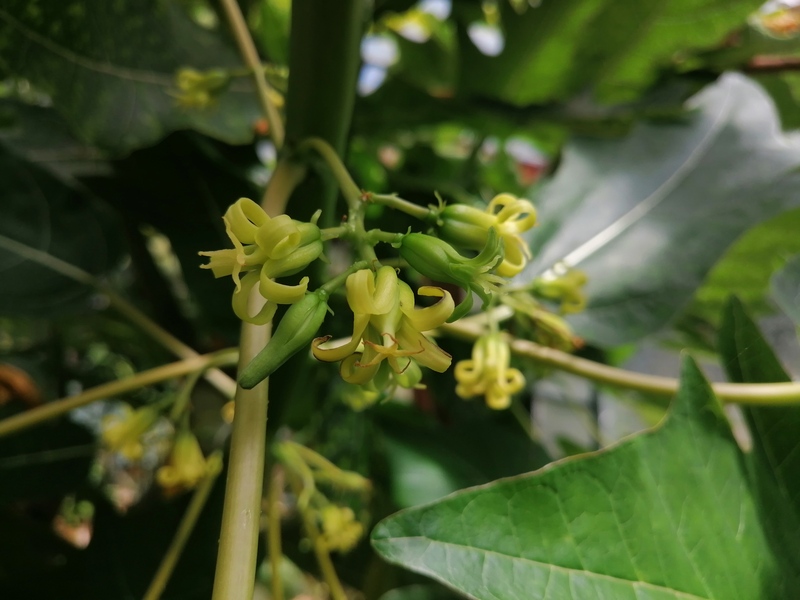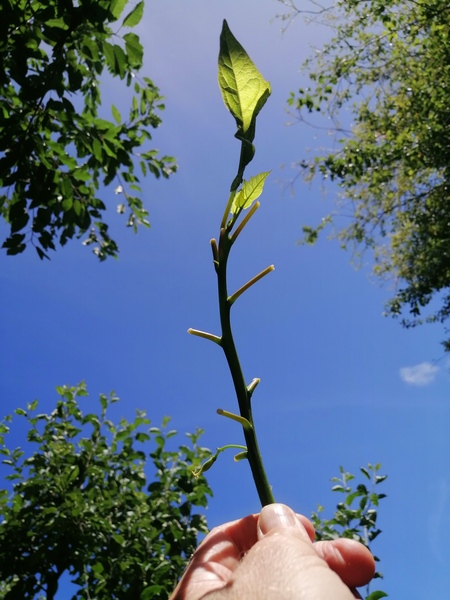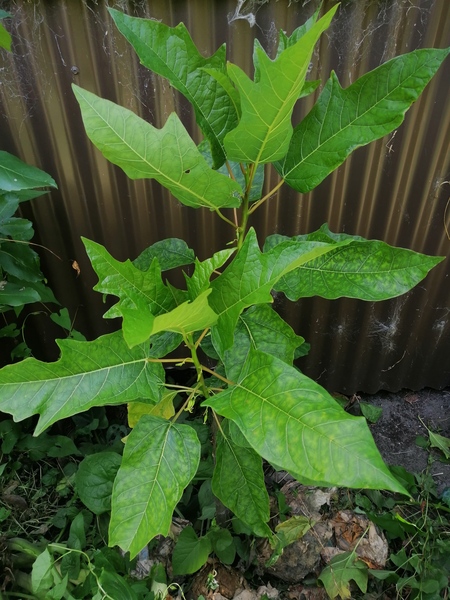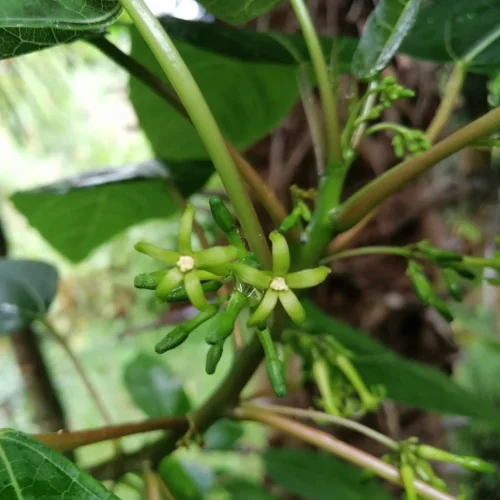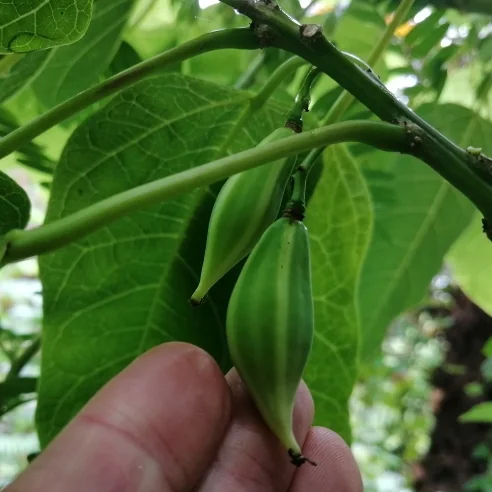Vasconcellea quercifolia, commonly known as “Papayuela” or “Oakleaf papaya,” is a tropical fruit tree native to South America, particularly in regions of Colombia and Ecuador. This fruit-bearing plant is known for its unique features and a range of benefits:
Features:
- Appearance: Papayuela is a small to medium-sized tree that typically reaches heights of 3 to 6 meters. The leaves are large and deeply lobed, resembling oak leaves, which is how it gets its common name, “Oakleaf papaya.”
- Fruit: The most distinctive feature of Vasconcellea quercifolia is its fruit. The fruit is small, usually about the size of a plum, and has a yellow to orange skin when ripe. The flesh inside is creamy and has a sweet and tangy flavor with hints of citrus.
- Cultivation: Papayuela trees thrive in tropical and subtropical climates with well-drained soil and plenty of sunlight. They are relatively hardy and can tolerate a range of soil conditions.
- Harvest Season: The fruit of Vasconcellea quercifolia is typically harvested when fully ripe, which is indicated by its soft texture and fragrant aroma.
Benefits:
- Nutrition: Papayuela fruit is rich in essential nutrients such as vitamins A, C, and E. It is also a good source of dietary fiber, which is beneficial for digestive health.
- Antioxidants: The fruit contains antioxidants, including vitamin C and beta-carotene, which help protect cells from oxidative damage and support overall health.
- Unique Flavor: The sweet and tangy flavor of papayuela makes it a delightful addition to fruit salads, desserts, and smoothies. Its unique taste distinguishes it from other tropical fruits.
- Medicinal Uses: In traditional medicine, various parts of the papayuela tree, including the leaves and fruit, are believed to have medicinal properties. They are used for treating digestive issues and as a natural remedy for skin ailments.
- Culinary Versatility: Papayuela can be used in a variety of culinary applications. It can be eaten fresh, used in jams, jellies, and preserves, or incorporated into savory dishes and sauces.
- Cultural Significance: In regions where Vasconcellea quercifolia is grown, it holds cultural significance and is often used in traditional celebrations and festivals.
- Biodiversity: Papayuela contributes to biodiversity in tropical regions by providing habitat and food for various wildlife species, including birds and insects.
It’s worth noting that while Vasconcellea quercifolia has several benefits, it may not be as well-known or widely cultivated as its more common relative, the papaya (Carica papaya). However, for those who have access to papayuela, it offers a unique and flavorful addition to the tropical fruit repertoire, along with potential health benefits.
How to cultivate
- Climate and Location:
- Vasconcellea quercifolia thrives in tropical and subtropical climates. It requires warm temperatures and cannot tolerate frost.
- Choose a location that receives plenty of sunlight. These plants prefer full sun but can tolerate partial shade.
- Soil Preparation:
- Plant Vasconcellea quercifolia in well-draining soil. The soil should be rich in organic matter to promote healthy growth.
- Ensure the soil pH is between 6.0 and 6.5, which is slightly acidic.
- Propagation:
- Vasconcellea quercifolia can be propagated from seeds or stem cuttings. Seeds are the most common method.
- If using seeds, soak them in water for 24 hours before planting to soften the seed coat.
- Plant the seeds in pots or directly in the ground at a depth of about 1 inch (2.5 cm).
- Keep the soil consistently moist until germination, which typically takes 2-4 weeks.
- Spacing:
- When planting multiple Vasconcellea quercifolia plants, ensure proper spacing, as they can grow quite large. Allow at least 10-15 feet (3-4.5 meters) between each plant.
- Watering:
- These plants need consistent moisture, especially during the growing season. Water deeply and regularly, but avoid waterlogged conditions, as they can lead to root rot.
- Fertilization:
- Fertilize your Vasconcellea quercifolia plants with a balanced, slow-release fertilizer every 2-3 months during the growing season (spring and summer).
- Additionally, you can apply organic compost or well-rotted manure around the base of the plant to enrich the soil.
- Pruning:
- Prune your Vasconcellea quercifolia plant to remove dead or damaged branches and promote a well-shaped tree. Pruning can also help improve air circulation and fruit production.
- Protection from Pests and Diseases:
- Keep an eye out for common pests like aphids, mealybugs, and fruit flies. Use appropriate organic pesticides if necessary.
- Vasconcellea quercifolia can be susceptible to fungal diseases, so ensure good air circulation around the plant and avoid overwatering.
- Support:
- Provide support to the growing plant if necessary, especially when it starts producing fruit. This prevents branches from breaking due to the weight of the fruit.
- Harvesting:
- Vasconcellea quercifolia typically takes 2-3 years to start bearing fruit. The fruit is ready for harvest when it turns yellow and is slightly soft to the touch. It’s important to pick the fruit when it’s ripe, as it doesn’t ripen well off the tree.
Remember that growing Vasconcellea quercifolia may require patience, especially in regions with cooler or temperate climates. Providing the right conditions and care will increase your chances of success in cultivating this unique tropical fruit.
